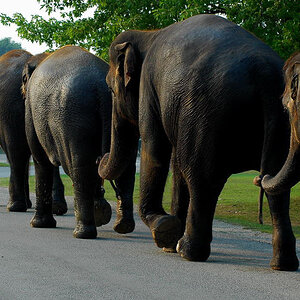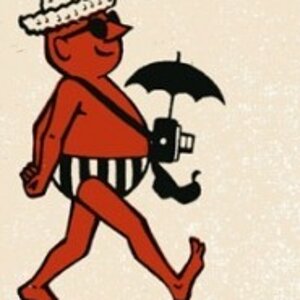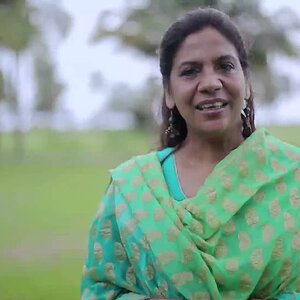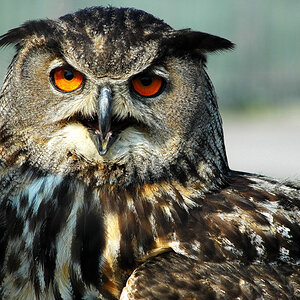- Joined
- Dec 11, 2006
- Messages
- 18,743
- Reaction score
- 8,047
- Location
- Mid-Atlantic US
- Website
- www.lewlortonphoto.com
- Can others edit my Photos
- Photos NOT OK to edit
Understanding how to look at a photo and see what bothers you about it is the key to everything. I looked up a few sites that purported to tell you about the 'Rules' of composition and came up with this list.
So what is it that you are expected to learn?
What you will eventually learn is how people see and interpret pictures that are shown to them. These 'rules' are actually just efforts to express this in an understandable and technical way.
We aren't actually aware of everything we see during the normal day. Out subconscious filters out some high percentage of the signal and only passes what we know from experience to be useful.
There is a simple example that makes this obvious. If you have ever been to a new city or culture, the first day or so, you are overwhelmed at trying to understand what is going on around you. Your subconscious doesn't have any filters and it passes everything your eye sees to your brain. After two or three days, you've developed the filters for that environment andmost of what your eyes see goes unnoticed by your consciousness. Seeing a picture is a different experience. A viewer knows the picture has been captured and presented and really has no preconceived filters. When anyone first looks at a picture, their subconscious parses every element and struggles to decide what is important and what isn't. It uses hints about brightness, color, focus, position.
Everything in the frame either contributes or take away from the overall impression. So, from this understanding of how people actually see and comprehend comes the only real 'Rule' and its three corollaries.
Rule: Know exactly what you want to take the picture of and let that guide the composition, exposure, framing and editing.
Essentially, understanding a photo presented for critique and giving advice on what could or should be done to it is the same process as looking at your own work and deciding how to edit it to get to the best possible result with the exception that you didn't take the picture and, most of the time, you are looking at the mid-point of the edit. Things might have been done that don't jibe with what you would have done and, at the same time, some things haven't been done that you would consider important.
How is this ‘critique’ actually done? There is a skill that can only be developed by exercise of a certain unnamed mental skill. We have to train ourselves to look at the image objectively and compare that image to what we think we see in our mind and both understand the difference and see the path from one to the other.
A good/great photo is that way because everything in the frame contributes to the picture and your mind's eye sees it as a gestalt - an organized whole that is perceived as more than the sum of its parts.
To understand that visceral response, start off by asking yourself questions and the responses build the critique. The questions separate out the various components of a picture into manageable quantities so you can understand why you feel as you do about the picture.
Each of these questions is meant to put every characteristic into one of three categories: adds to impact, detracts from impact, neutral.
General questions that deal with the content and the composition as presented.
·What feelings or impressions come from the picture?Are these feeling congruent with the content or subject? Is the photo interesting, does the content draw the viewer in?
Now, once you are aware of the differences between what you see and what you believe is the final, best result, it's becomes easier to formulate a plan to 'fix' everything. In a critique, you might stick to the major issues; for your own work you will have to formulate a workflow to correct what you see as defects and eradicate the difference between that you see now and what you want.
The more times you do this, the faster and more intuitive the process. Like an outfielder that starts running at the instant the ball leaves the bat, you will look the original shot and 'see' what the final result must be and the path to it.
A critique has two benefits; the intended one is to allow the photographer to see how his/her image is seen by others’ eyes - eyes that are unclouded by any emotional attachment to the image. The second benefit is that every critique can be a learning experience for the critic who sharpens his/her own eye by disentangling the many components of a photograph and weighing each of these to understand the photograph’s strengths, weaknesses and ultimate success.
- background
- balance
- balancing elements
- color
- cropping
- depth
- experimentation
- fill the frame
- framing
- golden triangles and spirals
- leading lines
- leaving space
- lines
- patterns
- rule of odds
- rule of thirds
- simplification
- symmetry
- symmetry and patterns
- texture
- viewpoint
So what is it that you are expected to learn?
What you will eventually learn is how people see and interpret pictures that are shown to them. These 'rules' are actually just efforts to express this in an understandable and technical way.
We aren't actually aware of everything we see during the normal day. Out subconscious filters out some high percentage of the signal and only passes what we know from experience to be useful.
There is a simple example that makes this obvious. If you have ever been to a new city or culture, the first day or so, you are overwhelmed at trying to understand what is going on around you. Your subconscious doesn't have any filters and it passes everything your eye sees to your brain. After two or three days, you've developed the filters for that environment andmost of what your eyes see goes unnoticed by your consciousness. Seeing a picture is a different experience. A viewer knows the picture has been captured and presented and really has no preconceived filters. When anyone first looks at a picture, their subconscious parses every element and struggles to decide what is important and what isn't. It uses hints about brightness, color, focus, position.
Everything in the frame either contributes or take away from the overall impression. So, from this understanding of how people actually see and comprehend comes the only real 'Rule' and its three corollaries.
Rule: Know exactly what you want to take the picture of and let that guide the composition, exposure, framing and editing.
- Corollary 1: Put important things in important places
- Corollary 2: Minimize the effect of any aspect of the photo that will detract from the impact of the photo.
- Corollary 3: Emphasize the effect of any aspect of the photo that will improve from the impact of the photo.
Essentially, understanding a photo presented for critique and giving advice on what could or should be done to it is the same process as looking at your own work and deciding how to edit it to get to the best possible result with the exception that you didn't take the picture and, most of the time, you are looking at the mid-point of the edit. Things might have been done that don't jibe with what you would have done and, at the same time, some things haven't been done that you would consider important.
How is this ‘critique’ actually done? There is a skill that can only be developed by exercise of a certain unnamed mental skill. We have to train ourselves to look at the image objectively and compare that image to what we think we see in our mind and both understand the difference and see the path from one to the other.
A good/great photo is that way because everything in the frame contributes to the picture and your mind's eye sees it as a gestalt - an organized whole that is perceived as more than the sum of its parts.
To understand that visceral response, start off by asking yourself questions and the responses build the critique. The questions separate out the various components of a picture into manageable quantities so you can understand why you feel as you do about the picture.
Each of these questions is meant to put every characteristic into one of three categories: adds to impact, detracts from impact, neutral.
General questions that deal with the content and the composition as presented.
·What feelings or impressions come from the picture?Are these feeling congruent with the content or subject? Is the photo interesting, does the content draw the viewer in?
- ·Are there one or more centers of visual interest?
- ·Is(are) the center(s) of interest - the main subject(s) - well placed within the frame and does the placement relate well to the rest of the content so that the viewer’s eye is drawn to, rather than away?
- ·Is there excess space that pulls the eye away and drains any tension or drama from the picture?
- ·Is there enough space so that nothing feels cramped or cut off?
- ·Are there geometric issues? e.g. are the horizontals and vertical correct, and is that important?
- ·Is the composition appropriate for the content?
- ·Is the color or tonality appropriate for the content? Saturation or lack of it? Correct hues, white balance?
- ·Does the color make the point that the photographer wants?
- ·Is the sharpness or lack of sharpness appropriate?
- ·Is everything that should be in focus and sharp, actually so?
- ·In the reverse, is there so much depth of field, that attention is drawn away from the real object of interest?
- ·Are there individual small defects - points of motion, dirt on the lens/sensor, out-of focus spots that hurt the image, unduly bright areas that draw the eye?
Now, once you are aware of the differences between what you see and what you believe is the final, best result, it's becomes easier to formulate a plan to 'fix' everything. In a critique, you might stick to the major issues; for your own work you will have to formulate a workflow to correct what you see as defects and eradicate the difference between that you see now and what you want.
The more times you do this, the faster and more intuitive the process. Like an outfielder that starts running at the instant the ball leaves the bat, you will look the original shot and 'see' what the final result must be and the path to it.
A critique has two benefits; the intended one is to allow the photographer to see how his/her image is seen by others’ eyes - eyes that are unclouded by any emotional attachment to the image. The second benefit is that every critique can be a learning experience for the critic who sharpens his/her own eye by disentangling the many components of a photograph and weighing each of these to understand the photograph’s strengths, weaknesses and ultimate success.









![[No title]](/data/xfmg/thumbnail/37/37621-b86590cf53fc4001d12701ee3091029b.jpg?1619738152)



